An Expert Explains the Difference Between Cheap and Expensive Phono Cartridges
Louis Dorio, the product specialist at Ortofon, breaks down one of the most vital components in any turntable setup.
 Otofon
OtofonEvery product is carefully selected by our editors. If you buy from a link, we may earn a commission. Learn more
The phono cartridge is the audio component that sits on the end of a turntable’s tonearm and holds the stylus. But that description doesn’t quite cover how important it is. It’s actually a complex electro-mechanical device that, in addition to holding the stylus, is responsible for converting the vibrations that the stylus picks up into an analog signal. It’s an absolutely vital component in any turntable setup.
Most turntables come with all the necessary components to get you listening to music, including the tonearm, phono cartridge and stylus. And the more expensive turntable that you buy, the higher quality components it’s going to come with. The great thing about hi-fi is that it’s a tinker’s hobby and nearly every component in the system — from the turntable to the speakers, amplifier to the phono preamp — can be upgraded and customized. That includes the various components that make up the turntable, including the phono cartridge.
The phono cartridge is actually one of the most upgradeable hi-fi components but it’s a slippery slope. You can buy a very good phono cartridge for around $100 or $250, or you can go balls-to-the-wall and spend close to $1,000.
So, what exactly are difference between a cheap and an expensive phono cartridge? There are a number of different aspects that govern the sound of a phono cartridge, and they’re all important to the overall sound quality.
Better phono cartridges sport a perfectly-shaped stylus tip
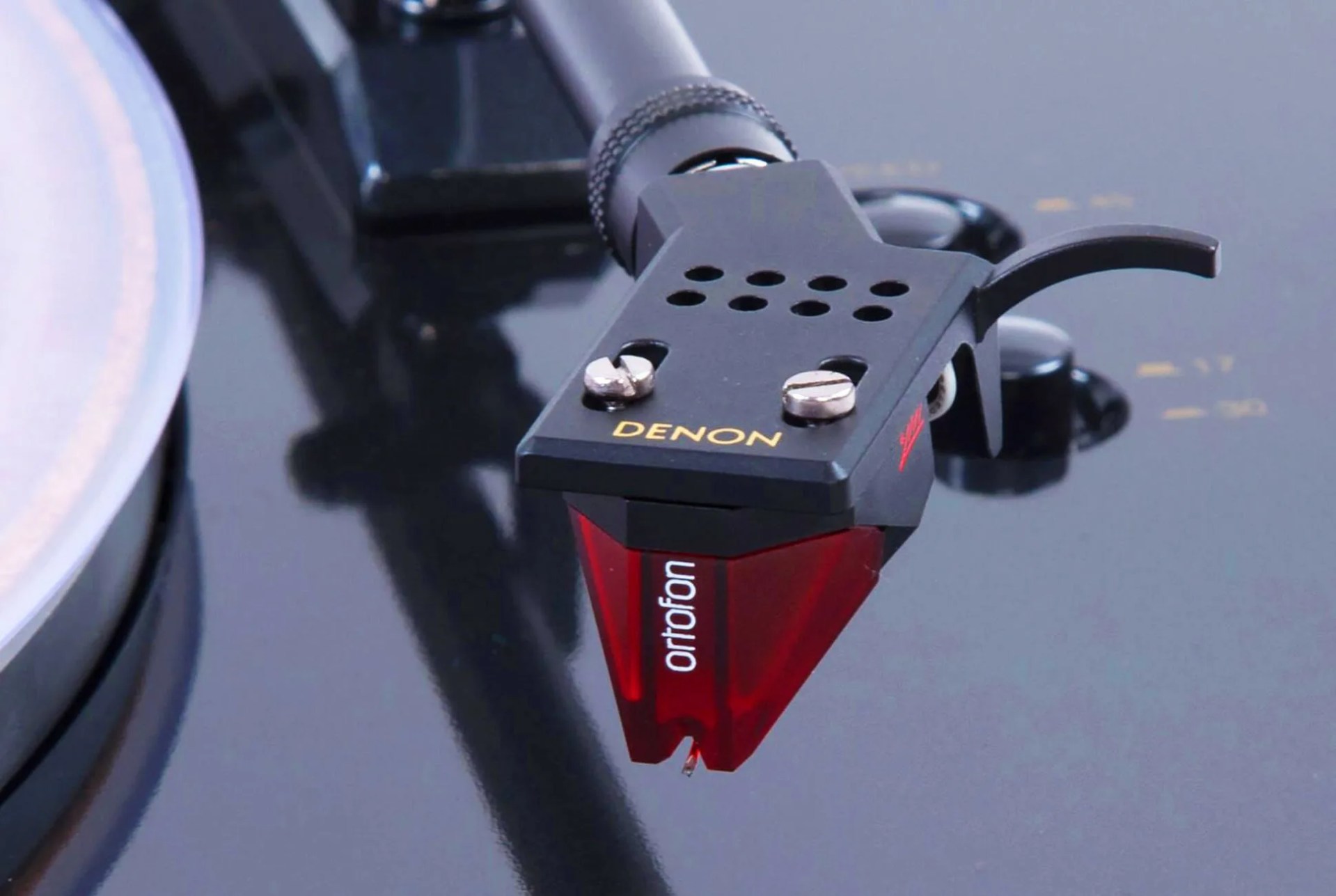
When you purchase a phono cartridge, you’re also purchasing the stylus that it’s holding. The diamond tip of the stylus, which is the thing that actually makes the contact with the record, comes in different shapes and variations.
“As you move up to higher models of phono cartridges, often the diamond shape is also upgraded so that the contact area can sit deeper in the groove,” says Louis Dorio, the product specialist at Ortofon, a Danish hi-fi company and one of the leading manufacturers of phono cartridges. “Upgraded shapes also weigh less — we’re talking fractions of a milligram — and that means that even smaller details and information can vibrate the stylus, henceforth extracting more sound from the recording.”
The spherical diamond is the easiest to produce, so it often finds its way into lesser-expensive models. As you go up in price, they start using an elliptical diamond shape, like the Ortofon 2M Red ($99). The Elliptical Diamond has a higher reaching frequency response and is able to extract more detail with less distortion.
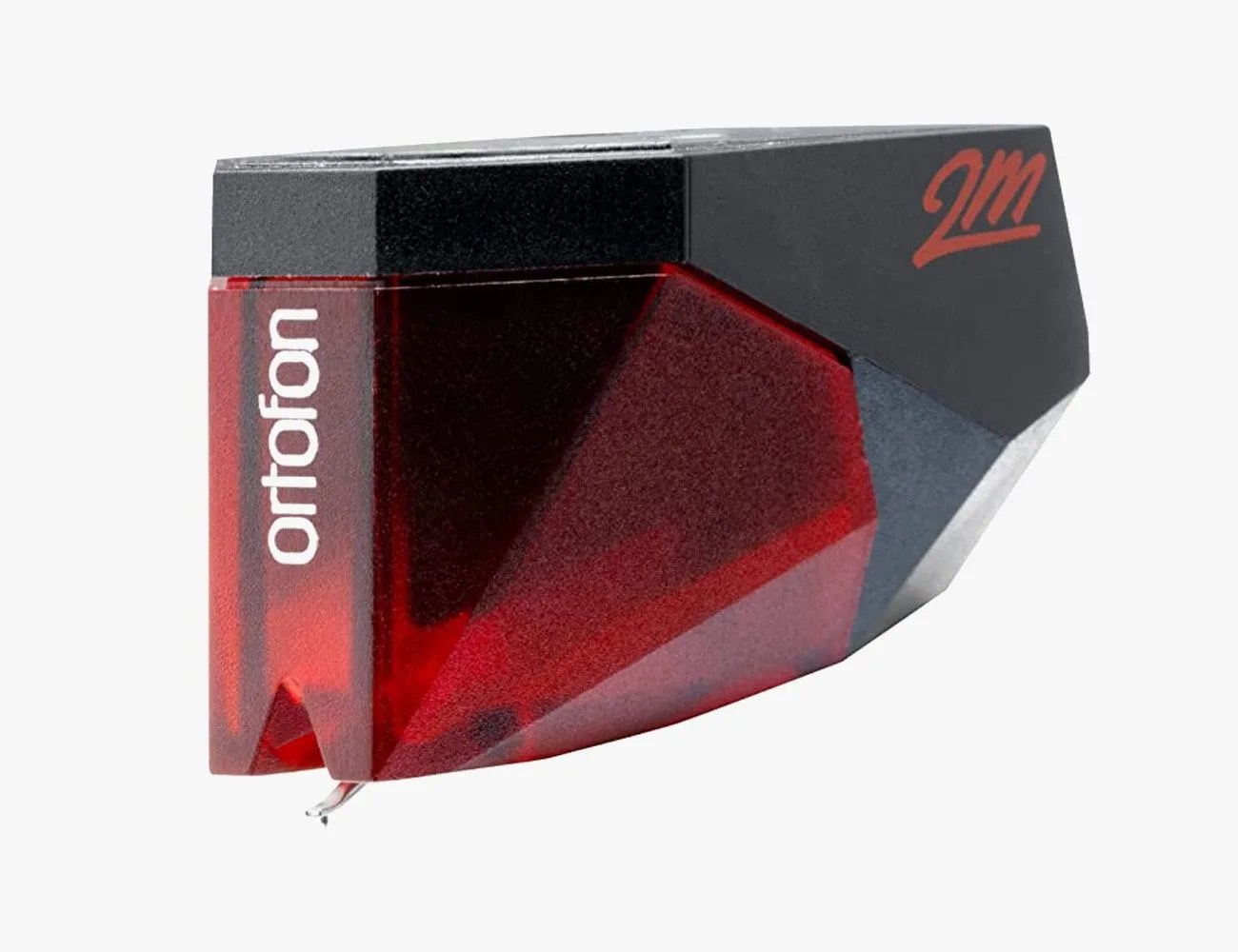 Otofon
OtofonOrtofon 2M Red Moving Magnet Cartridge
“Another thing to note is that less-expensive models tend to use a ‘bonded’ or ‘tipped’ diamond, which is basically a metal shank with a diamond cap glued to the tip of it,” explained Dorio. “When a pure diamond is used, it is specifically referred to as ‘nude.’ Since a nude weighs less, it is much more responsive to those small vibrations, also adding to the ability to reproduce details and higher frequencies with less distortion.” The Ortofon 2M Blue ($236), for example, uses a Nude Elliptical Diamond.
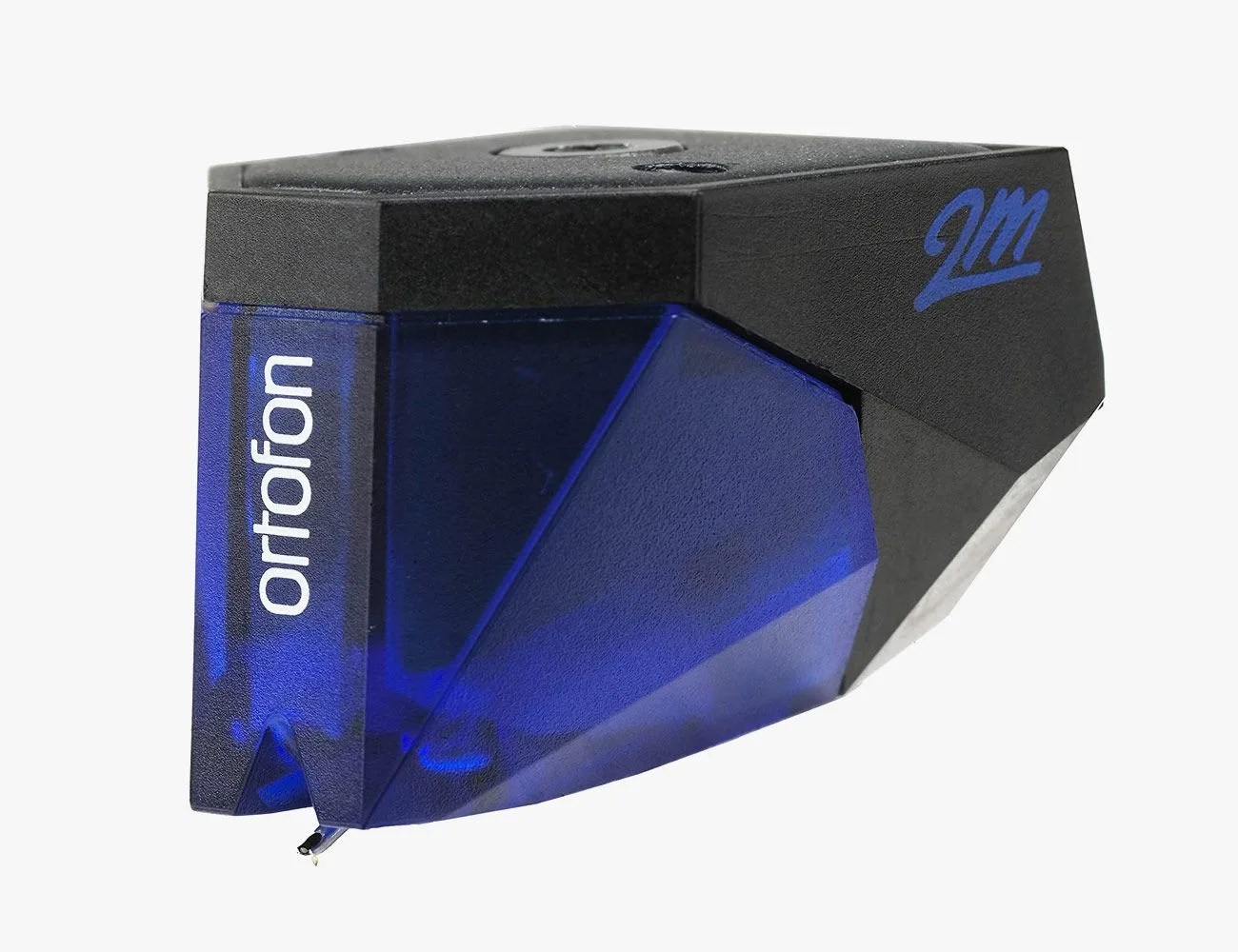 Otofon
OtofonOrtofon 2M Blue Moving Magnet Cartridge
-
$239.00
(21% off)
As you move up to even higher-end models, you’ll encounter many different diamond shapes — such as Fine Line, Shibata, Fritz Gyger and Replicant 100. — that are only available nude.
More sophisticated carts use a completely different mechanism
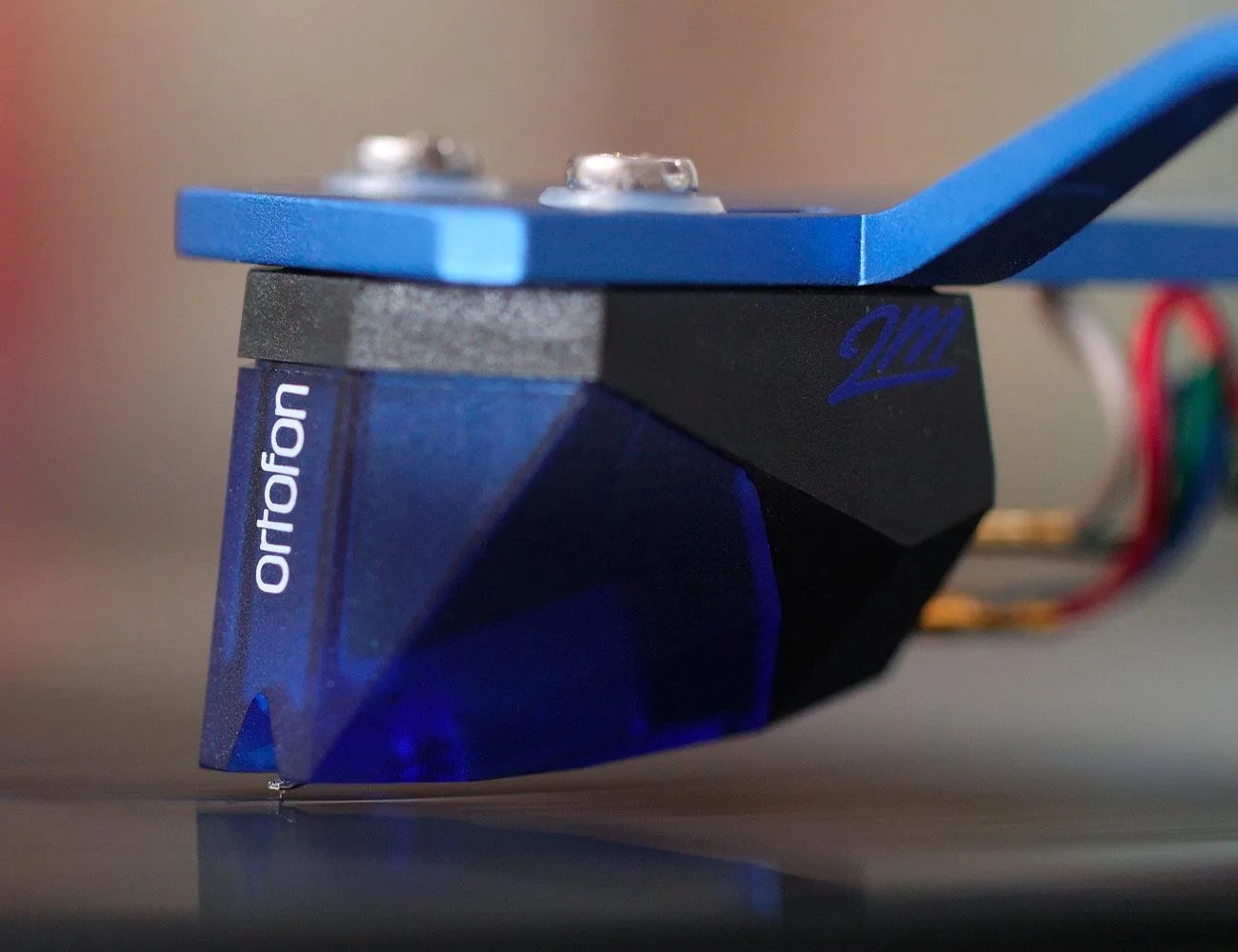
There are two primary types of phono cartridges, moving-magnet (MM) and moving-coil (MC), which are constructed differently and therefore convert vibrations into an audio signal differently, too.
A MM cartridge does this conversion by having a magnet attached to the cantilever, which then vibrates a pair of fixed coiled wires. A MC cartridge does the opposite, with a coil wire attached to the vibrating cantilever, which then vibrates a fixed magnet.
MM cartridges are significantly easier to make, but they’re less sensitive and deliver a less accurate signal.
Bottom line: on a MM cartridge, the magnet vibrates and the coils do not. On a MC, the coils move and the magnet does not. You can dive very deep into the engineering and physics if you want, but basically MM cartridges are significantly easier to make, but they’re less sensitive and deliver a less accurate signal.
If you own an entry-level turntable, there’s a good chance it has an MM cartridge. These cartridges are compatible with more turntables and external phono preamps; they’re easier to mass produce; and they’re frankly much more common. Also, MM cartridges make it pretty easy for a user to replace a stylus should it get damaged, where MC cartridges do not.
However, listeners that will stop at nothing in their pursuit of the best vinyl playback quality owe it to themselves to listen to a MC cartridge. They’re able to deliver an accuracy the MM cartridges simply can not. According to Dorio, MC cartridges are built entirely by hand — not mass produced — with an operator winding a specific number of coils under a microscope. This type of precision handcrafting requires skilled technicians, and every cartridge is run through a gamut of performance tests before it leaves the factory. It also, as you probably guessed, drives up the cost significantly.
Better carts have higher quality materials for the cantilever, coil wire and the cartridge body
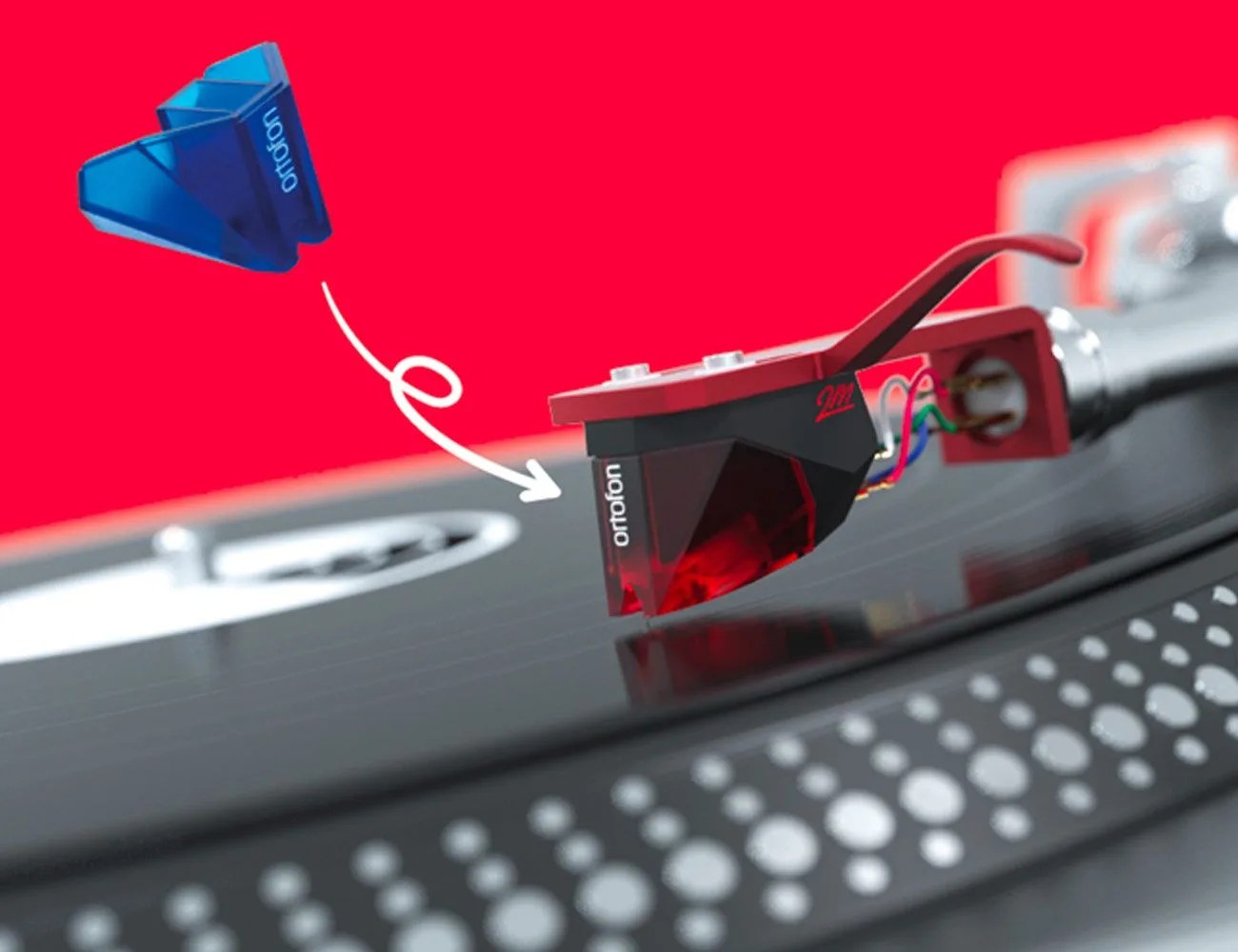
In addition to the different mechanical functions of different styluses, the material the various parts of a cartridge is made out of — the cantilever, the coil wire, and the cartridge body — also plays a huge factor.
“Although many great cartridges use aluminum for cantilever material, sometimes the aluminum is tapered to weigh less, and sometimes it is replaced with a different material entirely,” said Dorio. Some of Ortofon’s MC cartridges use sapphire, ruby, boron or even diamond itself for the cantilever material. “The benefit is that a more rigid material can be lighter and can transmit sound vibrations faster than that of aluminum.” Generally, higher-end MC cartridges use these nicer and more expensive cantilever materials.
The material of the coil wire makes a big difference, too. “When you’re working with extremely low voltage signals, sometimes changing the coil wire type — which is a wire that’s thinner than human hair — can help alter the sound of the cartridge,” explained Dorio. “Sometimes we use standard oxygen free copper, sometimes high purity copper, sometimes silver-plated copper, pure silver, gold plated copper or alloys.”
Finally, the material of the body and the resonance reduction components plays a big factor. If you change the housing material and the structural parts that make up the cartridge, it can reduce the miscellaneous vibrations that affect the overall clarity of the sound. “Ultimately with a cartridge, you want to focus the resonance that you get from the mechanical stylus movement as purely as possible, without outside sources of vibration,” Dorio explained. That was the audio signal that gets sent to the rest of your hi-fi system — to the preamp, amp and ultimately the speaker — is as accurate as possible.








